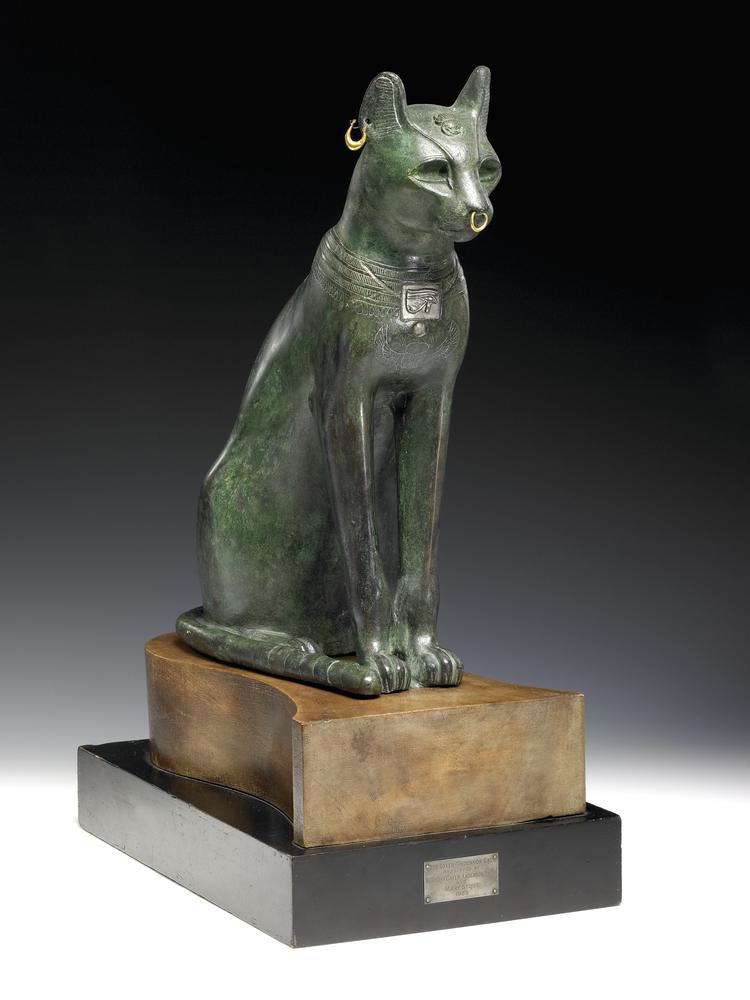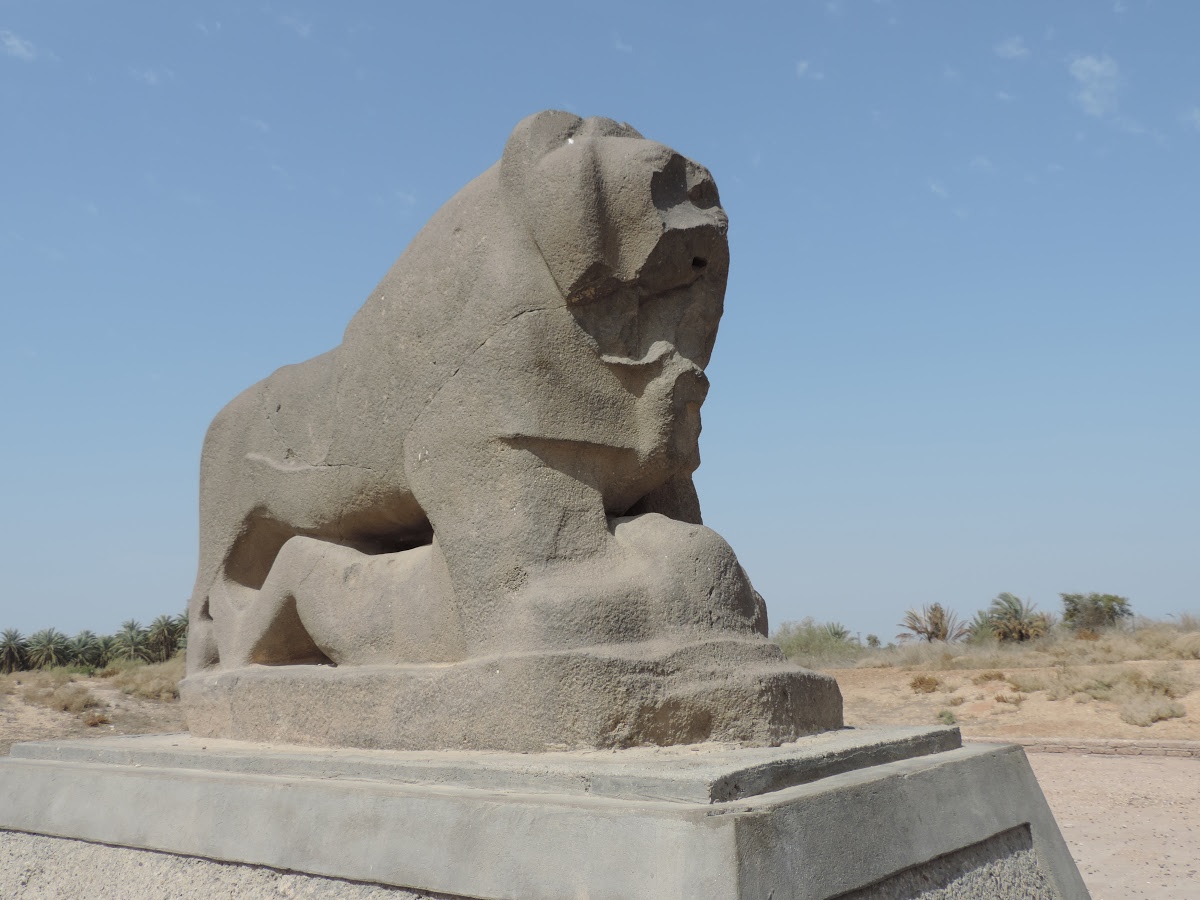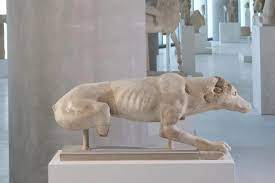Introduction
The animal kingdom has been a source of inspiration and worship for many people during ancient times. Certain animals had deities dedicated to them, while others were respected for specific traits, such as companionship and loyalty. This kind of perception can be witnessed in various artifacts, demonstrating the feelings different cultures had towards them. Some of those works will be reviewed and depicted in the following text.
The Three Artefacts
As stated earlier, some animals used to be perceived as sacred. Some examples are lions in Babylon and cats in Ancient Egypt. The value felines had in the latter culture was so impactful that they had a goddess who was usually portrayed either as a cat or as a woman with a cat’s head. Her name was Bastet and the deity represented women, domesticity, and childbirth.

One of the most famous portrayals of the goddess is the Gayer-Anderson Cat, which is currently located in the British Museum. The statue is made of bronze and is shown wearing a nose ring, pectoral and golden earrings (British Museum n.d.). It is decorated with a scarab on the head and a wedjat-eye on the pectoral. This artifact was most likely found in a temple; as such items were placed in those locations in Egypt.
Besides being the representative of Bastet, cats portrayed god-like features and protection. The latter was rather crucial to ancient Egyptians, as they would scare snakes and scorpions. Although most believe that cats were worshipped in this culture, others state that cats, like other animals, were simply used as means of portraying the gods’ valuable personality traits. This perspective may trigger several interesting discussions about how cats were viewed in ancient Egyptian religion.
The statue was named in honor of Major Robert Gayer-Anderson, who had a collection of various ancient Egyptian items. While the latter was demonstrated in his residence in Cairo, he donated the bronze figure to the British Museum. This work is used as an example of an animal being worshipped as a deity, especially given the fact that bronze statues of gods had rather high value in Egypt. An item similar to the Gayer-Anderson Cat would most likely be affordable only to royalty, emphasizing its importance.
Another example of deities being represented by animals is the Lion of Babylon. This animal was used for the portrayal of Ishtar, the goddess of war, love, and fertility. Moreover, lions were a representation of Babylon and were implemented to frighten and repel foes. The portrayal of these animals can be found in Nebuchadnezzar’s Throne Room, Iraq, and the Gate of Ishtar.

The statue of this creature is still rather popular in Iraqi culture, as it appears on bank logos, tourist literature, and the 25,000 dinar note. The Lion of Babylon is 2.6 meters in length and 1.95 meters in height. Judging by the marks on the statue’s back, it is very likely that this artifact was needed to carry Ishtar. Although the basalt statue has not been suitably preserved, it is still one of the most respected statues of Iraq.
This statue has been chosen to not only show another example of an animal representing a deity but to demonstrate the portrayal of two conflicting features, in this case, love and war (World Monuments Fund n.d.). Another reason for this example is the impact this artifact has on its modern culture to this day, as it is still portrayed on multiple items. This work of art is a prime example of how an ancient statue’s importance can transcend time.
The animal used in the third example was implemented more diversely and has had multiple portrayals in the artifact’s culture. The 6th century Hunting Dog was found 4 years ago in Greece and is estimated to be from 520 BC (Xpat Athens 2018). The figure is made of marble and is approximately the same size as a real hound. The dog is portrayed in a tense pose as if it is preparing to attack its opponent.

Throughout ancient Greek history, dogs have had a multifaceted portrayal in mythology and local religion. These animals were perceived as loyal companions, valuable for hunts, and the most loyal companions to humans. While the event that triggered the Greeks’ affection towards dogs is unknown, the animal is used as a representation of liveliness and loyalty. Ancient Greek culture valued canines for their strength, hunting skills, and intellect.
Besides being portrayed as friendly and helpful pets and partners during a hunt, dogs would be depicted as sacred and ominous as well. The Cerberus is a suitable example of the latter, as this animal was known for guarding Hades’ underworld gates and being a crucial part of Hercules’ trials. Moreover, dogs were commonly associated with Artemis, the goddess of the hunt, which is why these animals would be sacrificed to her.
The 6th-century Hunting Dog sculpture is used as an example due to the multiple characteristics dogs embodied in ancient Greek culture. While this artifact was found recently, it perfectly captures the affection the Greeks had towards these animals and their traits, such as speed, loyalty, and strength. Despite the rather vague origin, the love this culture has for dogs resulted in being rather stable, having greatly influenced the culture of this country. The multiple portrayals these animals received in ancient Greece demonstrate them from various sides, such as friendship, affection, and the ability to instill fear and caution.
Conclusion
In conclusion, the aforementioned three examples demonstrate how various animals portrayed different qualities in ancient cultures. Having reviewed these artifacts, I have learned how to suitably depict certain themes in the art of various countries. I have witnessed how some locations may have a diverse depiction of one animal, while others may have a more narrow approach. Moreover, my examples have demonstrated how some artifacts and perceptions of animals have transcended history and stayed relevant to this day. In general, these three works of art have their immeasurable value.
The Egyptian statue I depicted has shown me both the portrayal of a deity and a rather interesting viewpoint. It is claimed that animals were not worshipped; instead, they were simply used as portrayals of the gods’ character traits. The Babylonian statue has demonstrated how an artifact, despite its poorly preserved shape, can still have great value in tourism and the country’s modern culture. Finally, the Greek work of art has allowed me to review the diverse portrayal of dogs in local culture during ancient times. Thus, writing this text was rather informative for me and has allowed me to apply the learning experience I have received from this semester.
Works Cited
British Museum.“The Gayer-Anderson Cat.” The British Museum. Web.
World Monuments Fund. “The Lion of Babylon.” World Monuments Fund. Web.
Xpat Athens. “6th Century BC Dog Sculpture Was Found South Of The Parthenon.” XPAT ATHENS, 2018. Web.